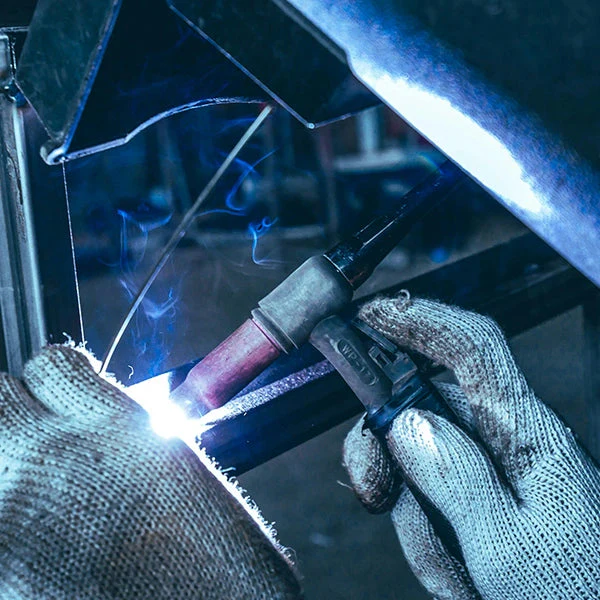Tungsten Inert Gas (TIG) welding is a precision technique celebrated for its ability to create clean, high-quality welds. This process, which utilizes a tungsten electrode to deliver the current to the welding arc, is employed extensively in industries such as automotive, aerospace, and even art installations. The appeal of TIG lies in the welder’s control over the weld pool, allowing for intricate joinery work that is as beautiful as it is functional. Not only does this control contribute to superior weld quality, but it also enables the welding of various metals, including aluminum, steel, and magnesium.
Welcoming the challenge of TIG Welding involves appreciating its versatility. This widespread applicability makes it ideal for projects where precise joins are critical and where the welded joint’s aesthetics cannot be compromised. Selecting TIG over other methods often comes down to these unique advantages, which cater excellently to both practical and decorative needs.
Choosing the Right Equipment for TIG Welding
Investment in suitable equipment serves as the cornerstone of successful TIG welding. Beginners and seasoned professionals alike must factor in the type and thickness of materials they anticipate working with when choosing a TIG welder. Not every welder is crafted the same; some are optimized for domestic projects, while others are designed for heavy-duty industrial applications. A model offering stable arc characteristics and flexibility with settings across a metal range is ideal, catering to both novice experimentation and professional needs.
Furthermore, key components like torches and accessories are often underestimated in their contribution to precision and overall project success. Ensuring you have high-quality torches can profoundly affect weld quality, enhancing precision and control to levels unattainable with subpar equipment.
Essential Safety Measures and Gear
Safety in welding is paramount, with protective gear being an essential aspect of the setup. Helmets equipped with auto-darkening filters play a crucial role in protecting welders’ eyes from harmful UV and infrared rays while offering clear views of the work area. Alongside helmets, fire-resistant clothing, gloves, and boots form a shield against sparks, heat, and electrical hazards, making them non-negotiable for any welding activity.
Creating a safe working environment goes beyond personal protective equipment (PPE). Adequate ventilation is vital to disperse potentially harmful fumes produced during the welding process. Implementing and adhering to safety protocols, such as maintaining organized workspaces and correctly handling tools, significantly mitigate risks, ensuring an environment conducive to both safety and productivity.
Setting Up Your TIG Welder
Setting up a TIG welder correctly is pivotal to achieving successful welds. Begin by selecting the proper tungsten electrode for the material at hand; using pure tungsten for aluminum and thoriated tungsten for other metals is a common practice amongst professionals. Proper amperage settings are also crucial, as they must align with the material thickness—incorrect settings can compromise the weld’s integrity.
The gas flow rate, typically between 15 to 20 cubic feet per hour, needs careful adjustment to maintain arc stability. Secure your gas cylinder tightly and inspect it for leaks regularly. By preparing meticulously, you’re paving the way for smooth welding with optimized precision and weld quality unparalleled by lesser setups.
Maintaining Your TIG Welding Equipment
Maintaining TIG welding equipment is integral to its longevity and performance. Regular cleaning of torch accessories, particularly the nozzle, prevents blockages that could disrupt the welding process. Monitoring the condition of hoses and cables is equally critical; promptly replacing worn or damaged components reduces downtime and ensures safety.
For further insights, reading resources like the maintenance guide for TIG torches can offer comprehensive advice. Such guides delve into intricacies that keep your setup in optimal condition, thereby maximizing both efficiency and outcome quality.
Tackling Common TIG Welding Challenges
TIG welding, while precise, is not without its challenges. A frequent issue is contamination—often caused by unclean surfaces or mishandling tungsten, which can severely affect weld quality. Prioritizing thorough cleaning and proper preparation of workpieces minimizes this risk significantly.
Poor penetration, another prevalent problem, can usually be addressed by recalibrating amperage settings. Practicing with different settings and mastering the correct torch angles and travel speeds results in improved, consistent weld quality. Troubleshooting these issues with patience and experimentation forms a critical part of a welder’s growth and expertise.
Continuing Your TIG Welding Education
In the dynamic field of welding, advancing one’s TIG skills opens doors to creative and professional opportunities. Online courses and tutorials provide advanced techniques and insights beneficial to both amateurs and professionals. Moreover, participating in communities of welders fosters a culture of learning and innovation, where shared experiences lead to collective growth.
Pursuing further education not only strengthens existing skills but also introduces new methodologies and practices. By engaging with these resources, welders can aspire to elevate their craftsmanship, ultimately contributing to more ambitious and complex projects.
Real-Life Examples of Successful TIG Welding Projects
Real-world applications of TIG welding showcase its versatility and precision. In aerospace, where safety and functionality are critical, TIG welding ensures that components meet exacting standards. Artists, on the other hand, leverage TIG welding’s meticulous detailing capabilities to create sculptures requiring both precision and an artistic touch.
Collaborating with experienced welders provides novices with invaluable exposure to advanced techniques and knowledge. Such interactions offer a practical extension of theoretical learning, nurturing a comprehensive understanding of welding processes and craftsmanship mastery.



